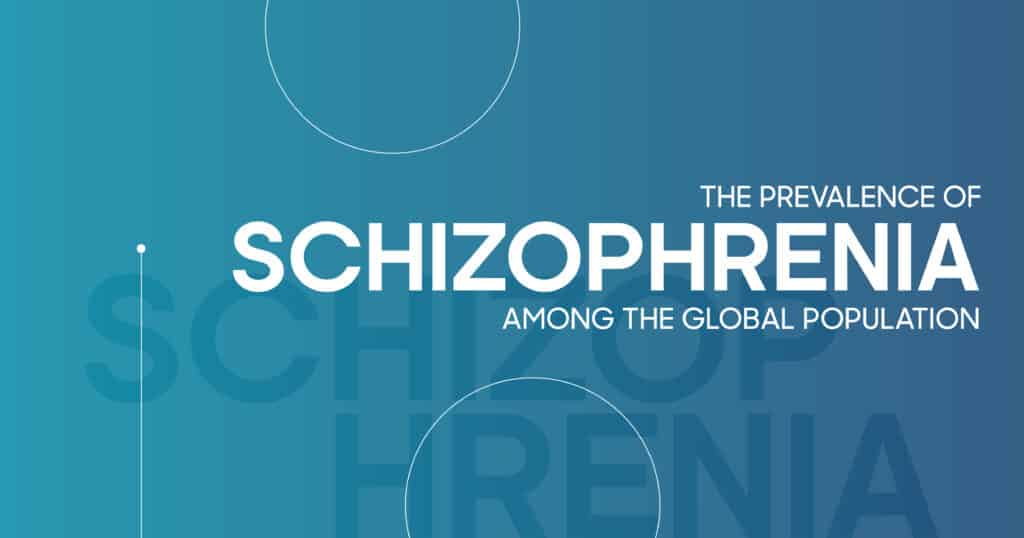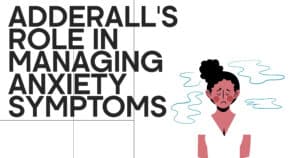Schizophrenia is a word you’ve probably heard tossed around, but most people don’t know what it really means. Some might link it to “hearing voices” or “losing touch with reality,” but the lived experience is a lot deeper than that. Those with this psychiatric disorder often face not just hallucinations or delusions, but also major thinking difficulties, confusion, and emotional withdrawal that can completely flip their lives upside down.
Despite how common it actually is, there’s still this fog of misunderstanding and stigma surrounding schizophrenia. And because of that, many people don’t get the help they so badly need. In this article, we’ll explore just how widespread this mental health condition is, why the numbers look the way they do, and why we really need a better, more human approach to understanding it globally.
What Is Schizophrenia?
At its core, schizophrenia is one of many disruptive mental health conditions that can touch every part of how someone thinks, behaves, and sees the world. People dealing with it might start seeing or hearing things that aren’t there. Or they might hold on tightly to beliefs that don’t align with what’s actually happening. They are consistently battling with what their mind is telling them versus what the world really is.
Global Statistics on Schizophrenia
So, how many people have schizophrenia? That question comes up a lot. And according to the global schizophrenia data provided by the World Health Organization, around 24 million people worldwide live with this disorder. That’s roughly 1 in every 300 people, or about 0.32% of the global population.
Now, when we’re talking about adults only, the number goes up to 1 in every 222 individuals, or about 0.45%. So yes, it might not seem super widespread compared to other mental health statistics, but it’s far from rare. And honestly, that number’s probably even higher because a lot of people never get diagnosed.
Regional Differences in Prevalence
Schizophrenia exists all over the world. But the rates don’t look the same everywhere. Some regions show higher numbers, while others seem to have less. But it’s not always about the actual schizophrenia prevalence. Sometimes, it’s more about access, or lack thereof.
Maybe a country doesn’t have enough trained professionals to spot and diagnose it. Maybe there’s a cultural belief that mental illness isn’t “real.” Or maybe individuals are scared to come forward and ask for help because they don’t want to be judged.
Factors Contributing to Global Variation
There’s no single answer here. It’s a mix of biology, access, societal views, and stress factors.

Factors Contributing to Global Variation
| Factors | Description |
| Genetics and Biology | If someone in your family has schizophrenia, your chances go up. There’s a strong genetic link. |
| Access to Healthcare | In places with decent healthcare systems, diagnoses are more common. But in regions where healthcare is poor or mental health isn’t prioritized, many cases go unnoticed. |
| Cultural and Social Views | In some cultures, the mental illness population is seen as dangerous or shameful. That stigma discourages people from seeking help. |
| Environmental Stress | People living in poverty, facing violence, or experiencing constant stress might be more at risk. Those tough environments can trigger the illness. |
All these elements remind us that while schizophrenia demographics may vary from one country to another, the need for kindness, proper care, and understanding is universal.
Age and Gender Distribution in Schizophrenia
Schizophrenia tends to hit during a very specific window of life. It usually shows up between the ages of 16 and 30. For guys, symptoms often pop up in their late teens or early twenties. But for women, onset might come a bit later, usually, in their late twenties or even early thirties.
This timing matters because it strikes right when most people are trying to build a future, college, jobs, and relationships. And then suddenly, that path becomes ten times harder to navigate.
Socioeconomic Impact of Schizophrenia
When someone is diagnosed with schizophrenia, it’s not just their burden. It ripples out, to families, to workplaces, to entire communities. Keeping a job becomes tough. Holding onto housing is even tougher. And building meaningful relationships is a whole different challenge.
Then there’s the money. Treatment is expensive. Between doctor visits, medication, long-term support, and therapy, the costs pile up fast. And if a person can’t work because of their condition, families often have to pick up the pieces. The ripple effect touches every layer of the system.
Healthcare Costs and Resource Allocation
Taking care of someone with schizophrenia isn’t cheap, and most governments know this. Every year, billions go into managing the condition. And when diagnoses are missed or delayed? Things only get worse, financially and otherwise.
Besides the medical bills, there are “hidden” costs too. This might include lost wages, disability benefits, and even support programs for caregivers. All this makes early detection and targeted support important. When mental health systems invest in mental health awareness, early intervention, and community programs, they’re saving money and giving people a real shot at a better life.
Employment Challenges and Social Implications
Living with schizophrenia involves more than managing symptoms. It’s about dealing with people’s reactions to those symptoms.
| Challenges | Description |
| Difficulty Finding a Job | Many people with schizophrenia struggle to find work, not because they’re not capable, but because employers hesitate. |
| Discrimination | There’s still this fear around the disorder. That leads to exclusion, unequal treatment, and bias. |
| Impact on Self-Esteem | If you’re constantly being shut out or misunderstood, it messes with your confidence. Feeling unwanted or “different” only deepens the struggle. |
Understanding these social dynamics is key. If we want a more just world, it starts with empathy and action.
Challenges in Accurate Diagnosis and Reporting
Accurately diagnosing schizophrenia isn’t always straightforward. In fact, it’s one of the trickiest parts of understanding the real schizophrenia prevalence around the globe. There are so many layers to how it’s reported, or not reported, that it’s tough to say for sure how many people are truly affected.
Some of these challenges are systemic. Others are cultural. And some are just due to plain old fear. Here’s what tends to get in the way:
- Stigma and Cultural Perceptions: In many cultures, mental health is still a taboo topic. People worry they’ll be judged or labeled for life if they admit something’s wrong. And that fear? It stops them from getting help.
- Limited Access to Mental Health Services: There are still way too many areas in the world where mental health professionals are scarce. Even when help is needed, it simply isn’t available.
- Difference in Diagnostic Criteria Across Countries: What’s considered schizophrenia in one place might not be diagnosed the same way somewhere else. That inconsistency makes comparing data messy.
- Underreporting: Lots of people never even make it to a diagnosis. They might self-isolate, go untreated, or get lost in a healthcare system that wasn’t built to catch them.
- Misdiagnosis: Sadly, schizophrenia sometimes gets confused with other psychiatric disorders like bipolar disorder or severe depression. That means numbers can get skewed, and people don’t get the right treatment.
If we want to better understand and help the mental illness population, we have to fix these problems. More education. Better access. Less shame. And, most importantly, more empathy.
Current Trends in Schizophrenia Research
The good news is that science is pushing forward. The research we’re seeing in 2025 is both technical and personal. There’s a big shift happening in how experts look at treatment and care. Instead of one-size-fits-all medication and outdated approaches, today’s focus is on real, effective, human-centered support.
| Current Trends | Description |
| New Medications | Older treatments mostly targeted dopamine. Now, new drugs are working on other areas, memory, cognitive function, motivation, and emotional health. |
| Psychotherapy | Therapy is being refined to directly target hallucinations, paranoia, and delusions. It also teaches people how to handle stress, rebuild routines, and maintain relationships. |
| Exercise, Lifestyle, and Behavioral Interventions | Research is showing that regular physical activity improves both brain health and mood. Lifestyle interventions like better sleep and diet are becoming part of mainstream care. |
With every study, treatment becomes a little more personalized. And that’s great, especially for a condition as complex as schizophrenia.
Get Help for Schizophrenia at California Mental Health
If you’ve made it this far and you or someone you care about is going through it, help is out there. At California Mental Health, support isn’t just about pills or sessions. It’s about building trust, listening closely, and walking alongside you every step of the way.
Recovery isn’t a straight line. There are ups and downs, setbacks and breakthroughs. But with the right people on your team, healing becomes more than just a hope, it becomes your new reality.
Whether you’re just now starting to notice signs or you’ve been living with it for years, it’s never too late to reach out. We believe in human-first care, and we’re ready to help you find peace of mind and the stability you deserve.
Don’t wait. Contact California Mental Health today to get help for schizophrenia, so you can take the first step today. And we’ll be here to take the next one with you.

FAQs
What is the prevalence of schizophrenia as a mental health disorder worldwide?
Schizophrenia may not be the most common mental disorder, but it’s still significant. About 24 million people live with it worldwide, which works out to roughly 1 in every 300 people.
What are the common symptoms of schizophrenia, and how are they identified?
Some of the biggest symptoms include hallucinations, like hearing or seeing things no one else does. Delusions, deeply held false beliefs, confused thinking, social withdrawal, and emotional numbness also tend to show up.
How is schizophrenia diagnosed, and what are the primary methods used in its diagnosis?
Diagnosis involves deep evaluation, interviews, and observation by trained professionals. It takes time and care to get it right.
What treatments are available for schizophrenia, and how effective are they in managing the disorder?
There’s no “cure” just yet, but schizophrenia can definitely be managed. A mix of antipsychotic meds, psychotherapy, lifestyle changes, and solid support can make a world of difference.
What causes and risk factors, including genetics, contribute to the development of schizophrenia?
No single cause explains it. But researchers know that brain chemistry, family history, trauma, drug use, and environmental stressors all play a role.







